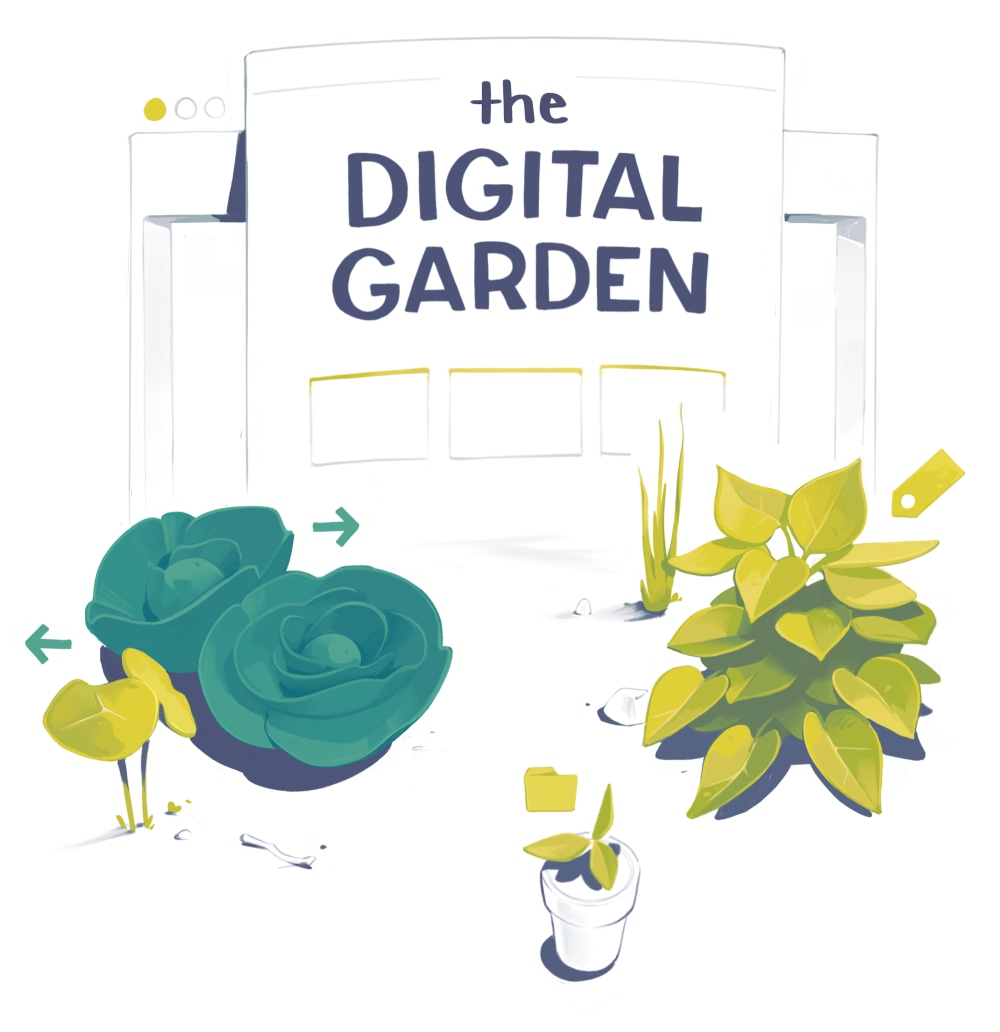
# notes
---
- [[{2.2a1} a digital garden is a collection of linked ideas that encourages curious exploration]]
- [[{2.2a} digital gardens are a protest against homogeneity on the open web]]
# summary
---
The idea of digital gardening may first be traced to [[Bernstein, Mark - 1998 - Hypertext Gardens]], which was part of a larger conversation about the landscape of the early web. The first Tweets about it came around in 2007, where people saw it more as a way to describe digital maintenance. Finally, in 2015, Mike Caufield delivered a keynote (and published a subsequent essay of the same name) titled [[Caulfield, Mike - 2015 - The Garden and the Stream - a Technopastoral|‘The Garden and the Stream - a Technopastoral’]] that lays the foundation for what we currently understand a [[digital gardens]] to be. Writers have expanded on Caufield’s thoughts, including [[Critchlow, Tom|Tom Critchlow]], [[Hooks, Joel|Joel Hooks]], and [[Hoy,Amy|Amy Hoy]].
Appleton describes a digital garden as a “collection of evolving ideas” in a “richly linked landscape that grows slowly over time”; in short, [[{2.2a1} a digital garden is a collection of linked ideas that encourages curious exploration]]. People can enter the garden at my points, but there’s no set pathway of navigation; ideas are interlinked and invite users to explore freely. They are imperfect, never finished, [[{2.2a1a1a} digital gardens are experiential text design|non-homogenous]], and playful. They are deeply contextualized and unrefined.
All of this pushes back against the [[{2.2} the layout of the internet is starting to feel life a cookie-cutter new development|cookie-cutter landscape]] of existing performative, SEO-optimized, reverse-chronological order “mini-magazines” and disconnected, decontextualized, limited-character bios.
Appleton identifies six key elements that digital gardens share:
1. **Topography Over Timelines**. Gardens are made up of contextual relationships and bi-directional links; they are not a feed of posts separated by when they were posted. ^f993e1
2. **Continuous Growth**. Gardens are never “complete”; they “evolve alongside your thoughts” and show the work rather than hiding it until you can produce a grand “finished” piece.
3. **Imperfection & Learning in Public**. Gardens are intentional, but not performative. They balance “chaos and cultivation”, or, as [[Bernstein, Mark. 'Hypertext Gardens'. 1998.|Mark Bernstein says]], [[{2.2a1a1a} digital gardens are experiential text design]].
4. **Playful, Personal, and Experimental**. Gardens are organized around the way you think, not around a Wordpress template. Ideally, it includes experimenting and programming and developing a totally customized space.
5. **Intercropping & Content Diversity**. Gardens aren’t just text posts; they should include the vast amount of media the internet allows us to share, including illustrations, Tweets, and videos.
6. **Independent Ownership**. The fully own and future-proof your garden, you should own your data (see Indieweb).
# highlights
---
>**A garden is a collection of evolving ideas** that aren't strictly organized by their publication date. **They're inherently exploratory** – notes are linked through contextual associations. They **aren't refined or complete** - notes are published as half-finished thoughts that will grow and evolve over time. They're less rigid, less performative, and less perfect than the personal websites we're used to seeing.
>The early web-adopters were caught up in the idea of The Web as a labyrinth-esque community landscape tended by [WikiGardeners](https://wiki.c2.com/?WikiGardener) and [WikiGnomes.](https://wiki.c2.com/?WikiGnome) These creators wanted to enable pick-your-own-path experiences, while also providing enough signposts that people didn't feel lost in their new, strange medium. The early web debates around this became known as [*The Navigation Problem*](https://link.springer.com/chapter/10.1007/978-3-642-55991-4_31)the issue of how to give web users just enough guidance to freely explore the web, without forcing them into pre-defined browsing experiences. The eternal struggle to find the right balance of chaos and structure.
>If anyone should be considered the original source of digital gardening, it's Caufield...
>
>Caufield makes clear digital gardening is... a different way of thinking about our online behavior around information -- one that accumulates personal knowledge over time in an explorable place.
>
>Caufield's main argument was that we have become swept away by streams – the collapse of information into single-track timelines of events...
>
>...streams only surface the Zeitgeisty ideas of the last 24 hours. They are not designed to accumulate knowledge, connect disparate information, or mature over time.
>
>The garden is our counterbalance. **Gardens present information in a richly linked landscape that grows slowly over time...** You get to actively choose which curiosity trail to follow, rather than defaulting to the algorithmically-filtered ephemeral stream. The garden helps us move away from time-bound streams and into contextual knowledge spaces.
>Tom Critchlow's 2018 article [Of Digital Streams, Campfires and Gardens](https://tomcritchlow.com/2018/10/10/of-gardens-and-wikis/) was one of the main kick-off points. Tom read Caufield's essay and began speculating on alternative metaphors to frame the way we consume and produce information. They suggested we add campfires to the idea of streams and gardens – the private Slack groups, casual blog rings, and [Cozy Web](https://maggieappleton.com/cozy-web) areas where people write in response to one another. While gardens present the ideas of an individual, campfires are conversational spaces to exchange ideas that aren't yet fully formed.
>Digital gardening is **part of the pushback against the limited range of vanilla web formats and layouts** we now for granted.
>Many of the people who jumped on the early digital gardening bandwagon were part of communities like...
• The [IndieWeb](https://indieweb.org/) collective – a group that has been championing independent web spaces outside the walled gardens of Instatwitbook for nearly a decade.
• Users of the note-taking app [Roam Research](https://roamresearch.com/) – Roam pioneered new ways of interlinking content and strongly appeals to people trying to build sprawling knowledge graphs.
• Followers of Tiago Forte's [Building a Second Brain](https://www.buildingasecondbrain.com/) course which popularised the idea of actively curating personal knowledge.
• People rallying around the [Learn in Public](https://www.swyx.io/learn-in-public/)ethos that encourages continuously creating 'learning exhaust' in the form of notes and summaries. ([View Highlight](https://read.readwise.io/read/01gsdnyq2shj3f9e03523d14v4))